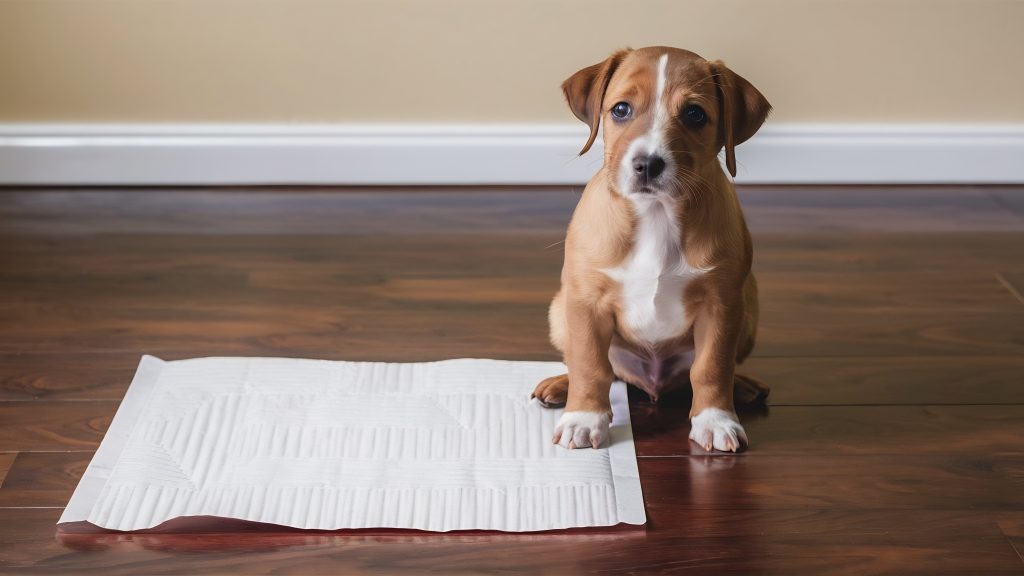Pee pad training can be an excellent option for puppies and dogs, providing a convenient indoor solution for potty breaks. This guide will walk you through the process, from getting the right supplies to successfully transitioning to outdoor potty time.

Why pee pads can be useful for dogs and puppies
Pee pads are a valuable tool for house training, particularly for those living in apartments or high-rise buildings where immediate outdoor access is limited. They are also useful for puppies who have not yet completed their vaccination series and for dogs with health issues or limited mobility who cannot always make it outside in time. For very young puppies, pads provide a safe and consistent place to go potty when their bladders are still developing.
Supplies you’ll need before starting training
- Pee Pads: These are absorbent pads designed for pet use. You can choose scented or unscented options.
- Crate: A crate is a powerful tool for house training, as it can help prevent accidents and establish a routine.
- Enzyme Cleaner: A pet-specific enzymatic cleaner is essential for cleaning up accidents. Standard cleaners won’t eliminate the odor, which can encourage your dog to go in the same spot again.
- Treats: High-value treats are crucial for positive reinforcement.
- A Leash: Even for indoor training, a leash can be used to guide your dog to the correct spot.
Step 1 – Introduce the pad and choose a spot
Place the pee pad in a designated spot that is easily accessible but away from your dog’s bed and food bowls. The area should be quiet and calm, as you want your dog to feel safe and focused. A good spot is a bathroom, a laundry room, or a corner of the kitchen. Let your dog sniff the pad so they become familiar with it.
Step 2 – Guide and reward proper use
Whenever your puppy wakes up, finishes playing, or eats a meal, it’s time for a potty break. Immediately take your dog to the pee pad. If they sniff around and start to go, use a verbal cue like “go potty” to associate the action with the words. As soon as they are finished, offer them enthusiastic praise and a treat. This creates a strong positive association. If they have an accident elsewhere, do not scold them. Simply clean it up thoroughly with the enzymatic cleaner.
Step 3 – Consistency and routine for success
Consistency is the single most important factor in pee pad training. Stick to a strict schedule for potty breaks and never punish accidents. A good rule of thumb is to take a puppy outside (or to the pad) every hour that they are awake, plus after every nap, meal, and playtime. The more consistent you are, the faster your dog will learn.
Transitioning from pee pads to outdoor training
Once your dog is consistently using the pee pad, you can begin the transition to outdoor potty breaks. Slowly move the pad closer to the door, a few feet each day, until it is right at the door. Then, move the pad outside. Once outside, put the pad in a designated outdoor spot. As your dog gets used to going outside on the pad, you can gradually decrease the size of the pad until it is no longer needed. Always reward your dog for going potty outside, just as you did indoors.



